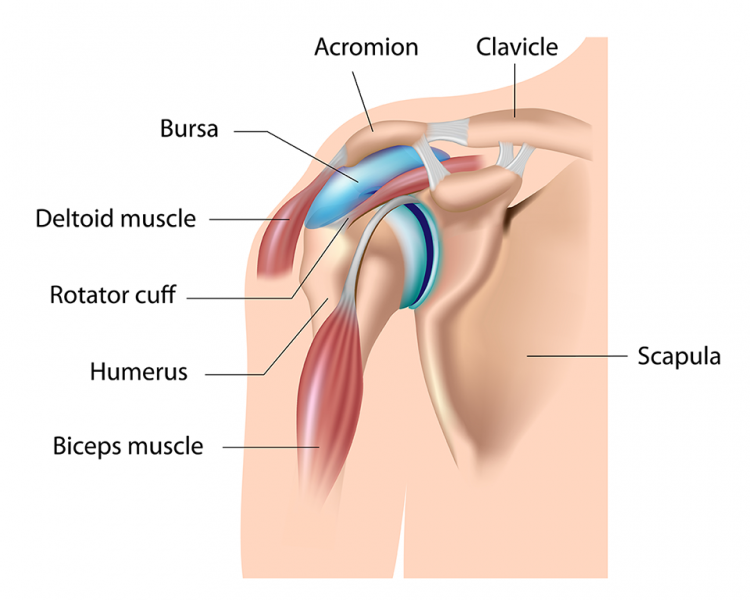The bursa is a structure that is found mostly around areas where muscle and tendons slide over joints. It is the bursa that helps lubricate these sliding motions to prevent damage to the underlying bony structures. When this action is compromised, the inflammation that result in Bursitis. The most common areas where bursitis occurs are the shoulder, elbow, hip, and the kneecap. Bursitis tends to get worse the more these joints are moved. A common cause of bursitis is from the overuse of a joint, especially when the joint is under the strain of excessive and repetitive use. Placing too much continuous pressure on a bursa can also cause bursitis. For instance, the bursa that is found in the back of the elbow can become inflamed by resting on the elbows for extended periods of time. 
Another cause of bursitis is traumatic injury. Trauma such as a fall on the shoulder, elbow, hip, or the knee could create this condition. As the bursa swells, the normal function to decrease friction is decreased. This causes any movement of the joint to be painful. If too much swelling remains in the bursa for an extended period of time, calcium salts will invade the region and eventually create a more chronic condition known as calcified bursitis.
Bursitis can be diagnosed by a complete history, simple examination, and by taking a x ray if necessary, of the involved joint. The calcified form of bursitis will show on the x ray. The extent of calcium deposits within the bursa can easily be visualized on the film. The range of motion of the joint and the amount of palpable (feel) swelling around the joint will help determine the extent of the bursitis condition.
Doctor Bagnell can help decrease the inflammation and improve the gliding action to the muscles and tendons surrounding the joint. Chiropractic treatments to the involved joint, therapies like alternating hot and cold packs, passive range of motion, and trigger point therapy may be considered as part of your course of treatment. Even the more difficult form of calcified bursitis can be treated by slowly breaking down the calcium deposits and applying therapies like passive motion or motion under mild traction to circulate the salts out of the joint tissue. Provided treatment is continued so that improvement can be achieved, the return of the calcium deposits should be limited.
